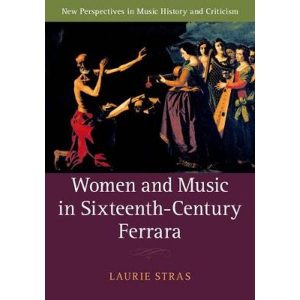Women and Music in 16th-Century Ferrara: An Interview with Dr. Laurie Stras
Overview:
Music history textbooks often mention the famous concerto di dame (consorts of women) that flourished at the court of Alfonso II d’Este, the last of his family to rule Ferrara before it was absorbed into the Papal States. Yet the standard understanding of these women—who they were, what music that they sang, and how their practices related to cultures of women’s music making in both court and convent throughout the century—has been woefully incomplete until now; the impression is that these remarkable women musicians of the late sixteenth century emerged almost from nothing. In her book Women and Music in Sixteenth-Century Ferrara, musicologist Laurie Stras shows that the ladies of the concerto drew on a long tradition of women’s music-making in the city, both at court and in the city’s robust network of convents, home to highly skilled female musicians who had cultivated the practice of virtuosic women’s ensemble singing for decades.
Credits:
Student researchers: Nathan Bishop, Glynnis Gourhan, Bridget Knodel
Video editor: Elly Toyoda
Faculty advisor: Rebecca Cypess
Photos and audio clips courtesy of Laurie Stras and Musica Secreta
